On every smoker, ribs should be bone side down to start.
If you opt to wrap the ribs and you wrap with a liquid the ribs should then be bone side up.
If you don’t wrap with a liquid, it doesn’t matter as much.
If you don’t wrap the ribs, they should be meat side up the entire time.
Which Side of the Ribs are the Meat Side and Bone Side?
The Bone Side
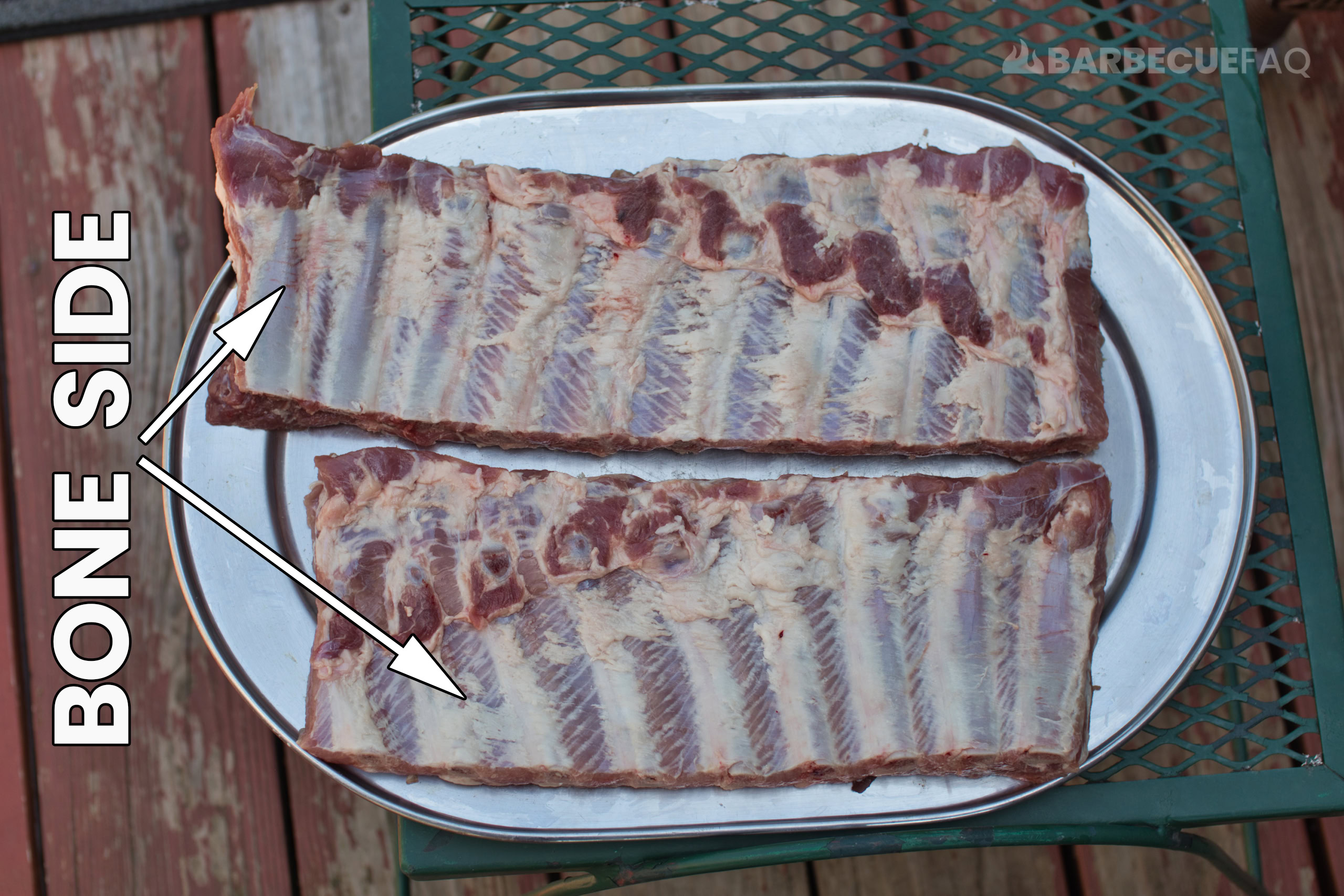
The Meat Side
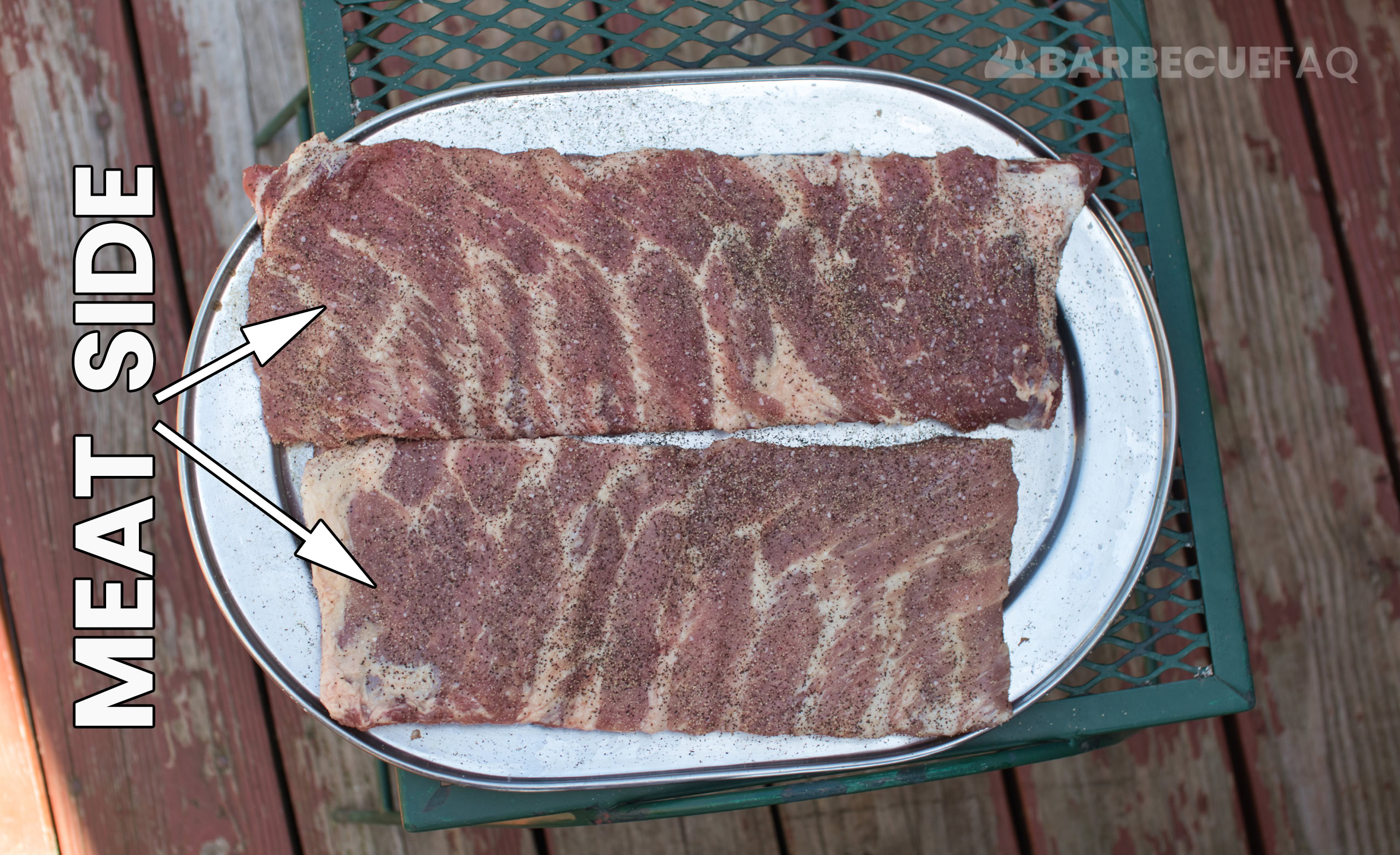
ALL Ribs Should be Smoked Meat Side Up Due to Presentation
People eat with their eyes first and having the meat side up allows you to build better bark.
We also want to maximize how much smoke adheres to the meat.
If you did meat side down you’d get less smoke flavor and you’d get grill marks on the meat.
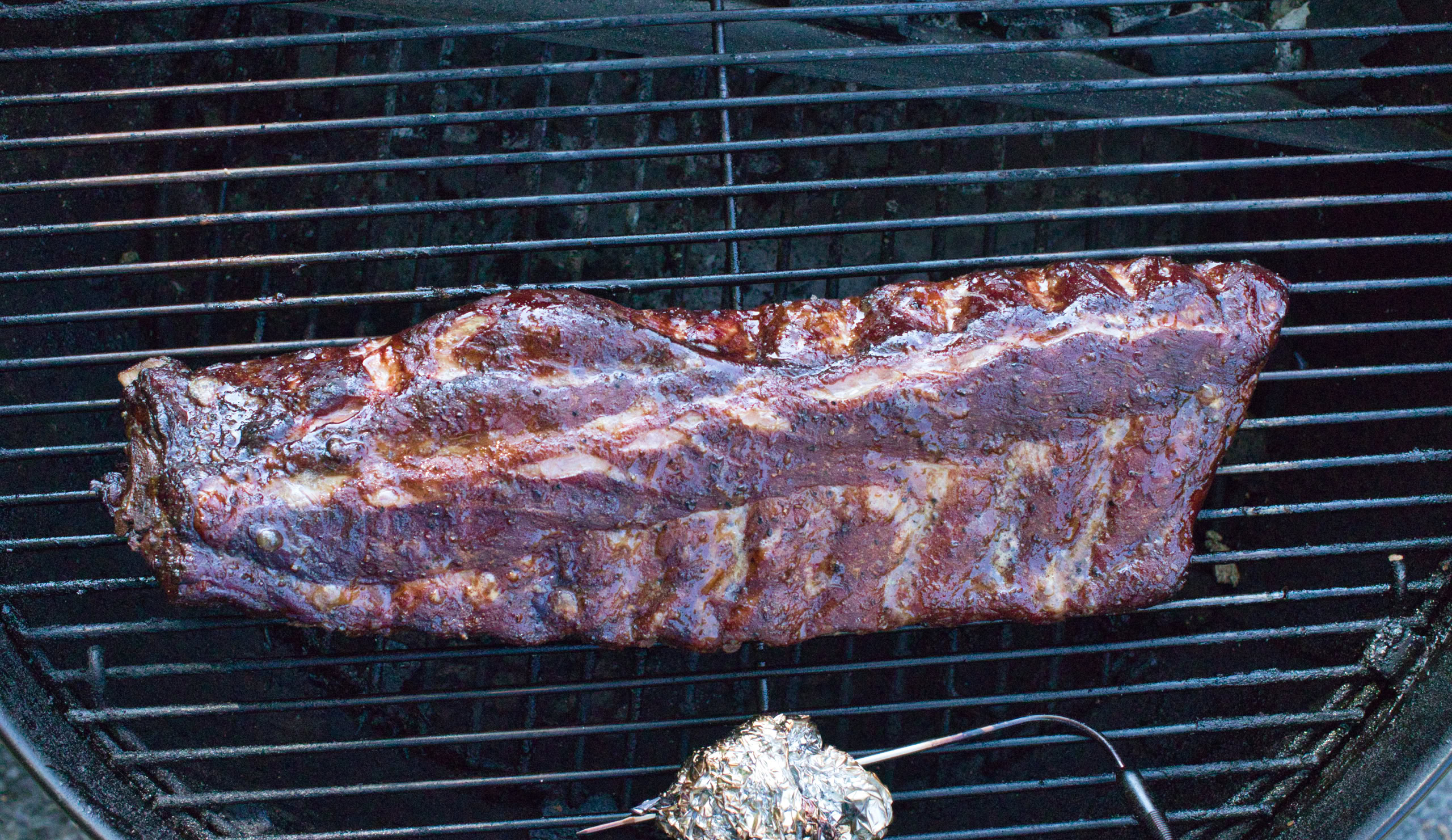
Since most of the rib meat is on top and between the bones you’d always want to start meat side up.
When Would the Bone Side Be Up?
If you wrap your ribs, you want to wrap meat side down OR bone side up.
The reason for this is because most people who wrap ribs will use tinfoil and they’ll liquid wrap their ribs. The meat then lays in this liquid which braises the meat.
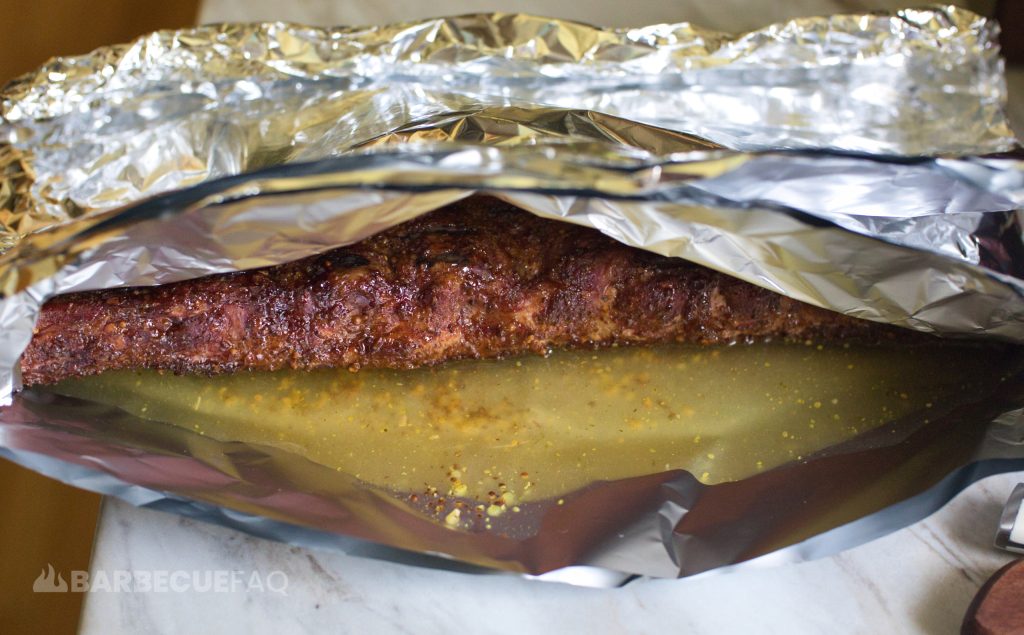
Personally, all I do is spritz a little bit of water on top of the aluminum foil and then lay the ribs meat side down.
However, in my case it wouldn’t matter much.
We’re just trapping warm air to help the meat come to tenderness faster.
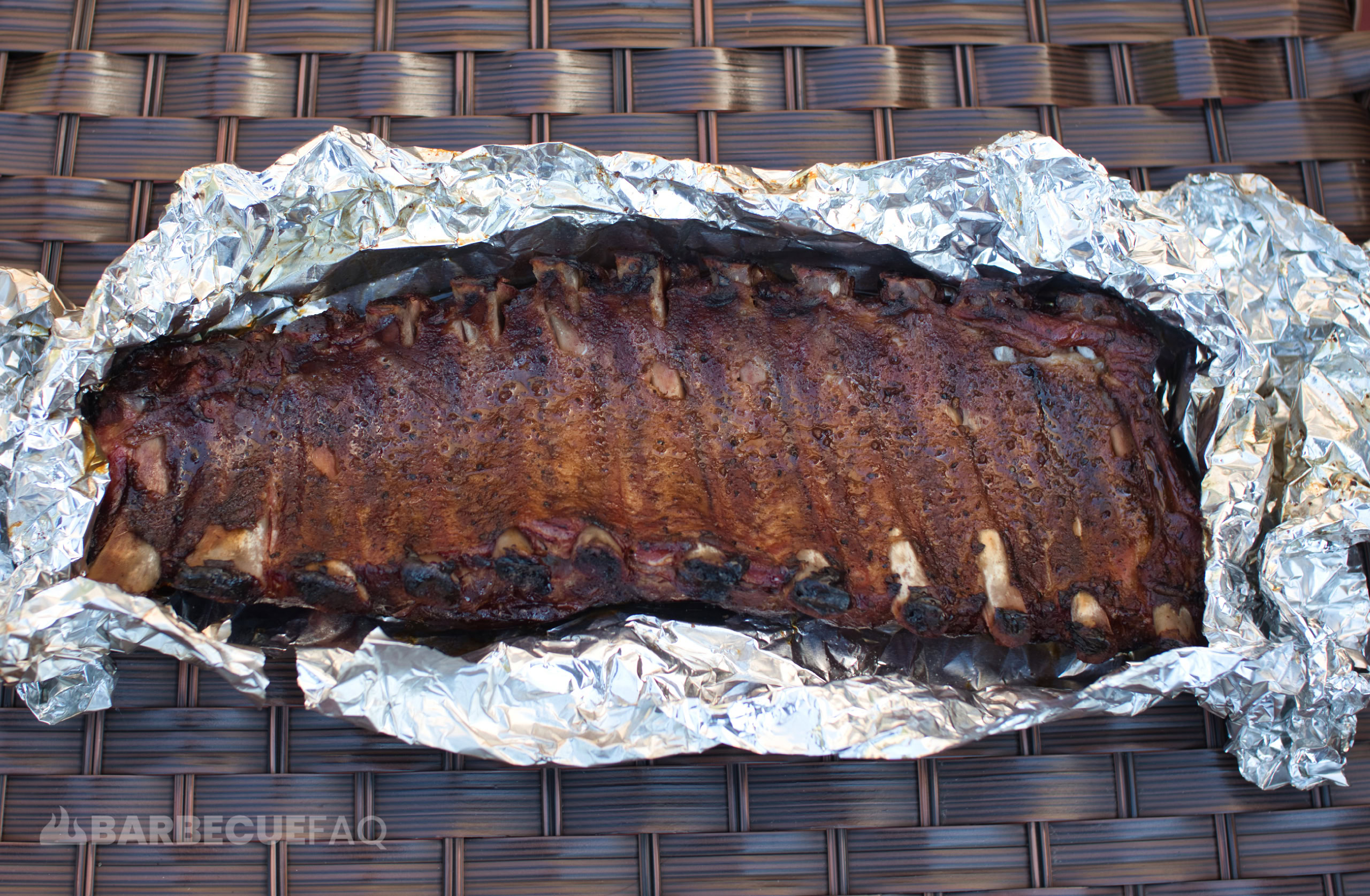
What If I Wrap Ribs with Butcher Paper?
Since butcher paper is permeable, you can’t wrap with liquids – meaning meat side up or down doesn’t matter.
We’re doing the same thing still – trapping moisture to speed the cook time.
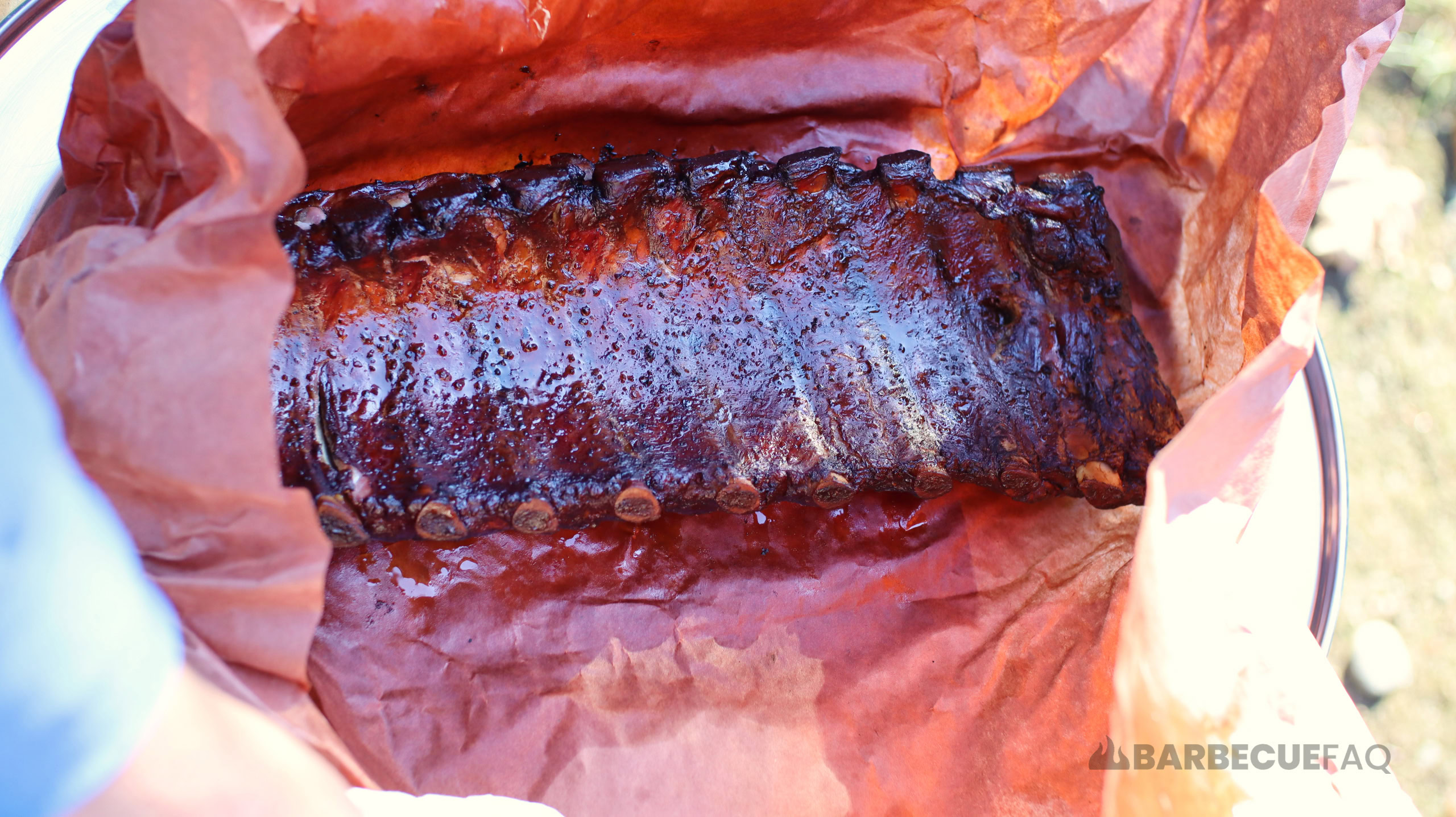
What About “No Wrap” Ribs?
You’d smoke meat side up the entire time.
With the idea that the meat side is your presentation side, there isn’t much utility in flipping the ribs over to the bone side.
BUT if you’re doing direct heat BBQ, you’d start meat side up and then flip for 45-60 minutes to get some color on the meat side of the ribs – then flip back to the bone side to finish with a mop.
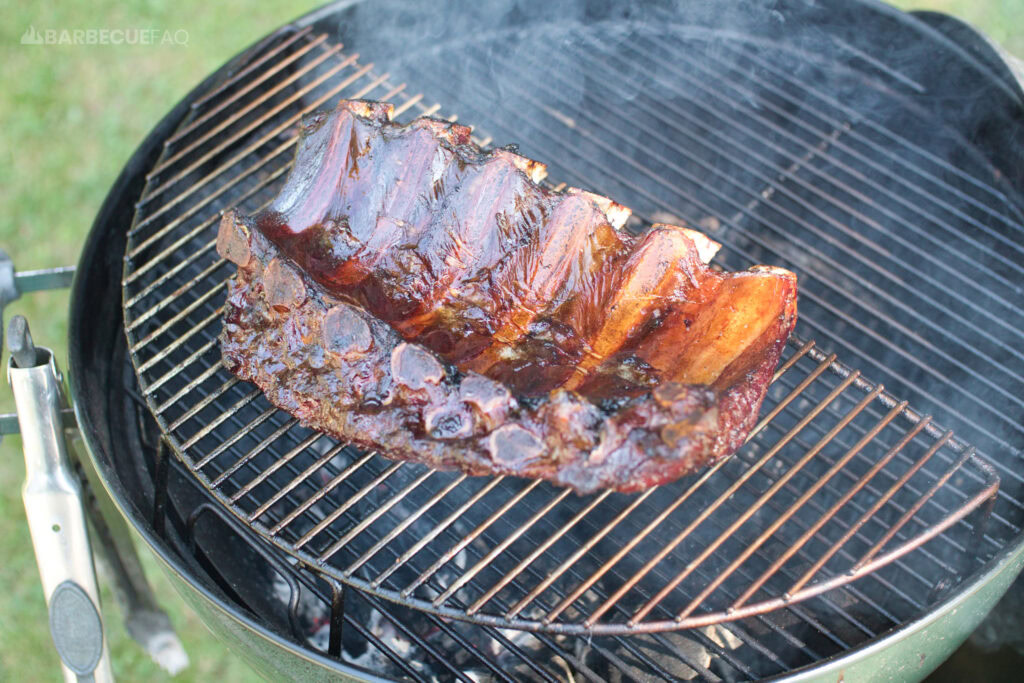


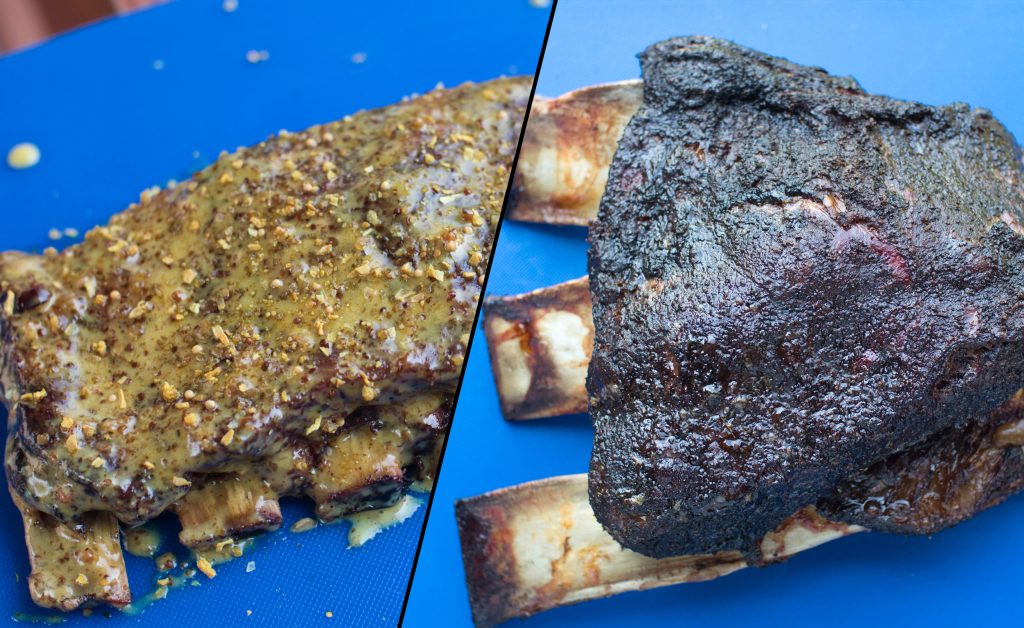
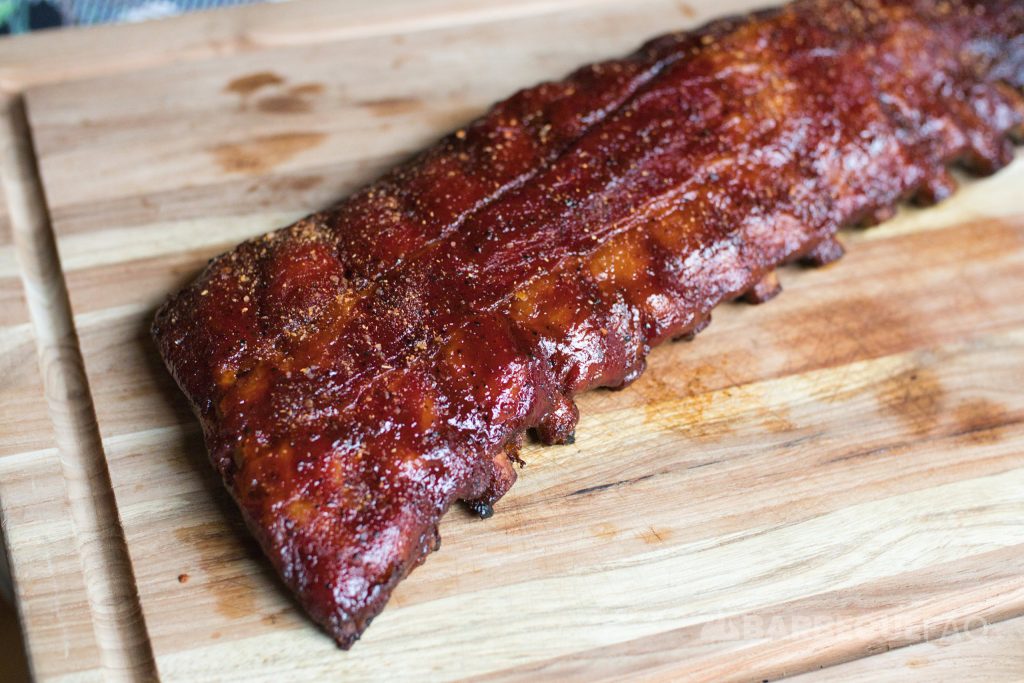

4 comments
Joseph Pierce
I liked everything you put in here for someone who’s learning how to barbecue and smoke meat thank you for taking time to educate some of us.
Dylan Clay
Happy to help Joseph!
Randy L. Ryder
Thank you, the information you gave was most helpful.
Dylan Clay
Happy to help Randy!